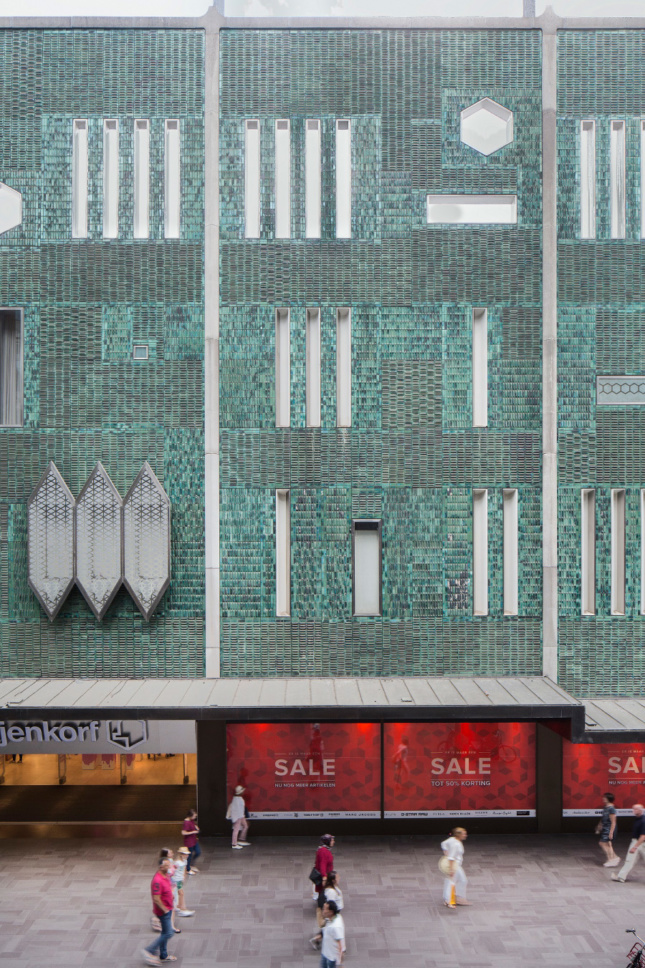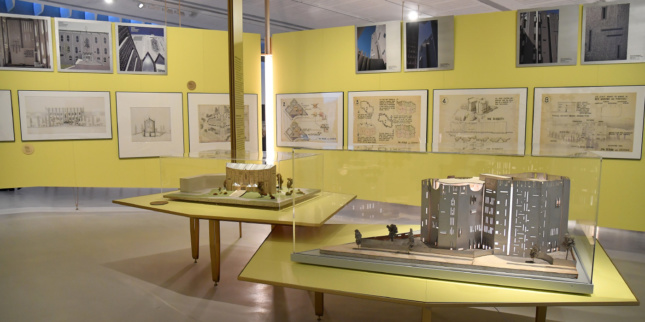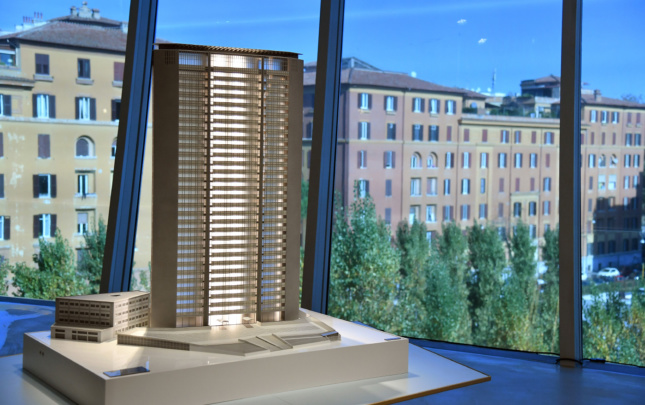Gio Ponti (1891-1979), the architect of the renowned Pirelli tower in Milan, is now the subject of a major retrospective at the MAXXI museum in Rome. While the Louvre’s MAD in Paris dedicated a major show to Ponti back in 2018— Tutto Ponti, Archi-Designer, it overwhelmingly celebrated his design production. This exhibition at the MAXXI, Gio Ponti. Loving Architecture, is primarily dedicated to Ponti’s multivalent architecture, and his projects have been given the kind of ample space and resources necessary to grasp the broad scope of Ponti’s very particular creative vision. Curated by Maristella Casciato and Fulvio Irace, and set in the upper gallery 5, it is the first major architecture exhibition to occupy this prominent gallery since Zaha Hadid’s own show there in 2017. For heightened effect, along with images of models shot by Thomas Demand, the exhibition includes photos of Ponti’s built works by eight contemporary photographers, providing original visual commentaries on how we see these works today.

The exhibition features an incredible display of models, architectural documents, original photographs, consolidating Gio Ponti’s well-garnered role as a poetically driven architectural modernist. You get this sense from the way Ponti peels back architecture’s opaque materiality, revealing through subtle manipulations of form and content a certain lightness and playfulness that over the course of his career becomes increasingly elegant and refined. Ponti saw his architecture as a search for a special understanding of the ‘crystalline.’ The exhibition’s co-curator Fulvio Irace suggested that Ponti’s search for the crystalline form is not about modeling volume, but rather about “…its negation by way of the autonomy of the walls and of the roof.” One need only look at the interchangeable facade panels employed in the models of the Bijenkorf Department Store for Eindhoven (1964-1968), on display at MAXXI, to see just how inventively Ponti pulled this off.

Ponti built extensively across Italy, and well beyond, in Stockholm, Caracas, Denver, Islamabad, Hong Kong. He collaborated professionally with Bernard Rudofsky in Capri back in the late thirties, and with Luigi Nervi after the war. Ponti launched magazines like Domus, wrote and published extensively, and he knit together a significant international network of patrons, manufacturers, and artists. Yet what remains somewhat intriguing, if not puzzling about Gio Ponti, is how he remains an outlier among the great architects of his day, if you consider the likes of Ernesto Rogers, Carlo Scarpa, Giovanni Michelucci, or Giancarlo De Carlo.

When I posed this question to the Milanese-based architecture historian Luca Molinari, he came back with this observation:
“Giò Ponti was not loved by the Italian progressive and modernist vanguard because he had pursued a third, moderate, bourgeois and decorative way for his modern architecture. In addition to this, his ambiguous closeness to Fascism had not been forgiven by characters such as Bruno Zevi and Ernesto Rogers and therefore his position was very isolated at the level of the Academy and cultural elite.”
There is little question, today, however, that Gio Ponti’s body of work deserves another reevaluation, especially if we are also willing to recognize that such criticism also holds true for many star architectural practices that are considered at the top of their game today.

Gio Ponti. Loving Architecture will be on display through April 13.











